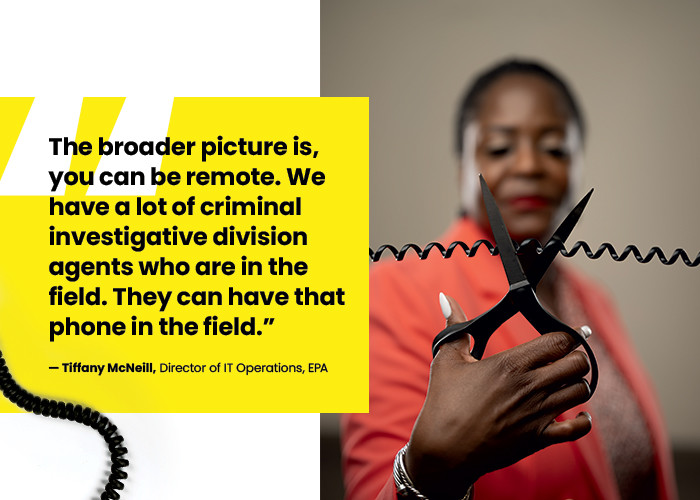Softphones Improve Patching and Remote UX
Softphones bring other advantages: First, agencies aren’t required to purchase new equipment or hardware that may see little use, such as desktop phones. Second, IT teams can readily patch softphones to resolve cybersecurity vulnerabilities faster than VoIP technology allows. The natural wear and tear inherent in VoIP technology also requires desk phones to be replaced as they age. Parts in the phones at some agencies may now be more than 10 or 15 years old. Perhaps most important, leaders like McNeill say the change improves support for a truly hybrid workforce. Her manager, EPA CIO Vaughn Noga, has said workers should enjoy the same IT experience whether they work at home or in the office.
“The broader picture is, you can be remote,” McNeill says of the transition. “We have a lot of criminal investigative division agents who are in the field. They can have that phone in the field. We have a lot of lab workers who are away from their desks. You can be in the coffee shop and get a call. Work is what you do, not where you are, and you’re no longer necessarily tied to that desk.”
EPA employees have welcomed the change.
“They are really excited about it,” McNeill says. “They want to get rid of that hardware on their desk, and they are excited about picking up that laptop and going anywhere while still being able to make and answer phone calls, wherever they are.”
Softphones generally offer instant messaging, call forwarding and other capabilities more traditionally tied to desk phones.
Avaya, a cloud-based communications company, is building out the EPA’s cloud infrastructure with AT&T and tested the new setup over the summer. When the system is finished, the software will be pushed to employees’ laptops, and their existing telephone numbers will be ported to activate their lines. The project should wrap up by the end of 2024, McNeill says.












